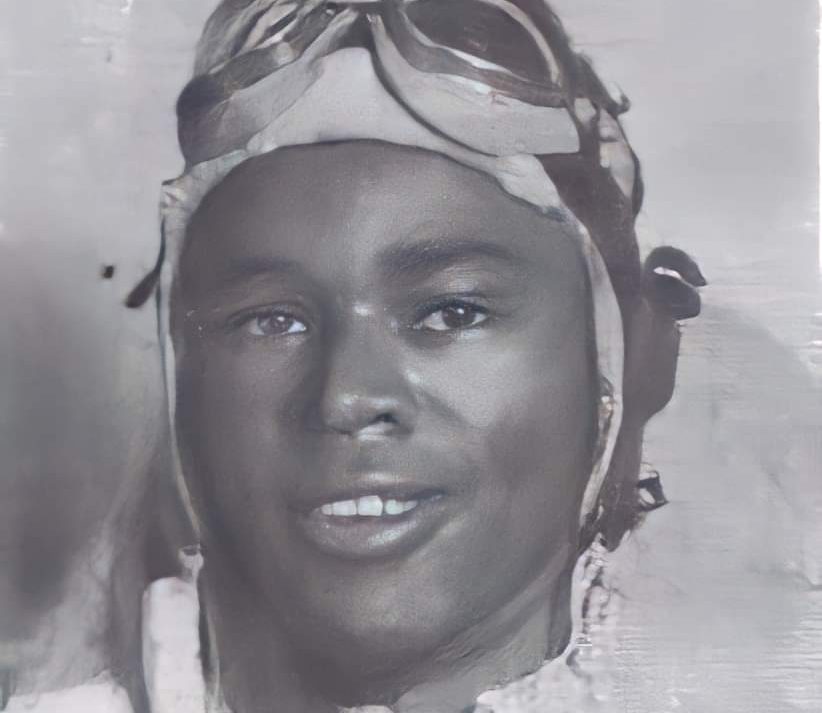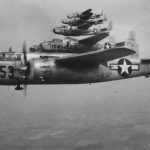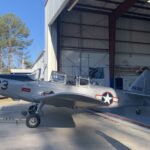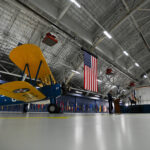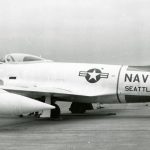In July, 2004 I stood in the middle of a scorching hot cornfield in Geneseo, NY, as a junior member of the 1941 Historical Aircraft Group. I had volunteered as a tour guide with the National Warplane Museum‘s newly formed Tuskegee History program and had just completed my first group tour to a mass of students from the Rochester City School district (older than I, at the time.) They now sat in a tent, and were listening to a presentation by local African American Historian Dr. David Anderson. With a booming voice, and excellent use of gestures and storytelling prowess, Dr. Anderson walked the visiting children through the complete story of the Tuskegee Airmen. He told of some of the earliest Black aviators, Eugene Jacques Bullard and Bessie Coleman. The crowd was agape with wonder, they were hooked.
Next up, to deliver the “knockout punch,” was Tuskegee Airman Charles Price, also a Rochester native. He told of his time as a Red Tail ground crew member, much to the awe of the students and teachers alike. This was already the perfect day, or was it? The oral history segment of the presentation concluded, but the fun was just getting started. Renowned Warbird Pilot John “Skipper” Hyle next strode up to the tent, and asked the crowd if anyone had heard of the P-51 Mustang. A few of the teachers raised their hands, but to the kids, it was all gibberish. Well, that would soon change. A few short moments later, “Skipper” was counting the blades at the end of the V-1650 Merlin, and with a kick, the Mustang woke up. All of a sudden, history came alive to the attendees, the name “P-51 Mustang” now had meaning.
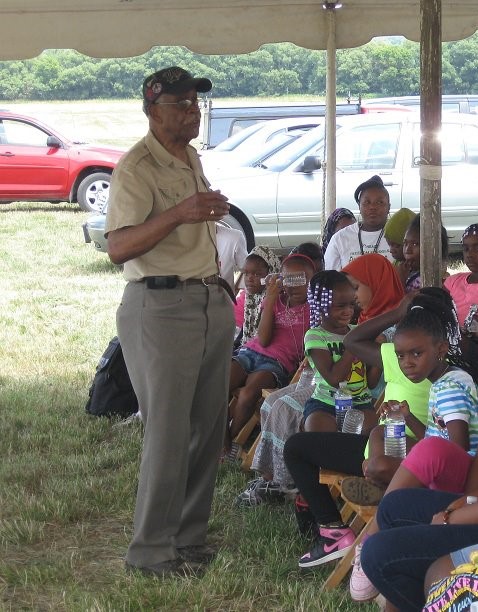
“Skipper” throttled the Mustang up, and after takeoff, continued to make a few passes over the flight line. The mouths of the kids and adults hung wide open (yours truly included.) In what seemed like a time warp, the Mustang soon alit, and “Skipper” walked back to the crowd that now stood still in shock. As he walked towards me, John could see the look in my eyes. “You’re the next Mustang pilot, huh?” he asked. I knew the answer (still “working on it”), I had from the age that the first words out of my mouth were “P-51 Mustang.” What I didn’t know, until that day, was how inspired I’d be to tell the story of the Tuskegee Airmen, on a personal level.
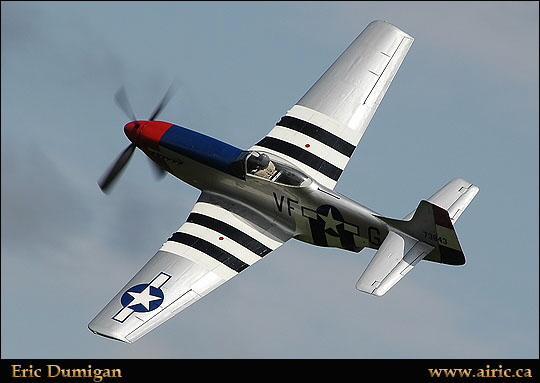
The Tuskegee History program would continue at our airshow over the years, enduring city school budget cuts, inclement weather, and a museum name change. Yet, like the Tuskegee Airmen themselves, the presentation never quit. That brave group of African American pilots and support crew, who fought against racism and stacked odds all throughout World War II, we worked hard each year to keep a program afloat to tell their story. I would also stick with the effort, year after year, as my interest in the Red Tails only grew stronger. In 2010, I began to feel a sixth-sense connection with the Tuskegee Airmen. It felt as if someone was calling my name, calling for help. I took this as a cue to begin doing some research. I wanted to see if, in addition to Mr. Charles Price, there were any Red Tails from the Western NY area who actually flew the P-51. At the time, I was just beginning college and flight school. I had access to a vast amount of free research resources, and I took advantage of them all.
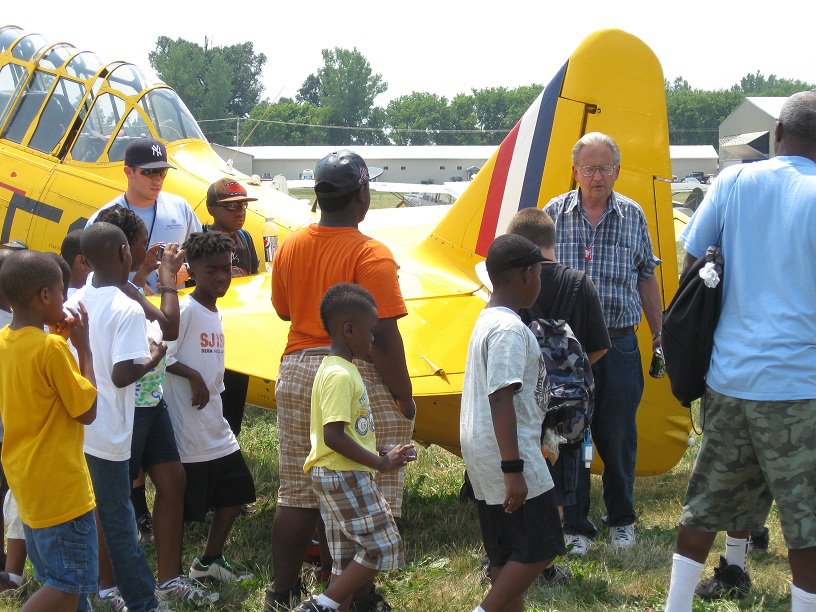
With a little digging, I learned of the name of Leland Pennington, thanks to an article in the St. Louis Dispatch (of all places.) A Tuskegee Airman from Rochester, NY, Leland had gone MIA while flying a P-51 somewhere over Croatia. That was all I had found, nothing more, nothing less. Yet, I felt a calling of sorts. This story needed more attention, Leland was crying to be heard. Not only for his story, but the story of others like him. I reached out to the author of the article, asking for her sources and if she had any leads for me to pursue. I heard back within 24 hours, and I had the name of Leland’s cousin, Al Fields, who was still living near me in Rochester. I had my next mission.
I wrote a letter to Mr. Fields, explaining my interest in his cousin and the service he gave as a Tuskegee Airman. I expressed my desire to learn more, and possibly turn this discovery into an effort to create a flying memorial to Leland. I wanted to take on a project like this, and base it at the museum in Geneseo as the cornerstone of our annual Tuskegee History Program. The local connection would really leave a lasting impact on the program participants, I thought. The gears were turning in my head, I could envision my project taking flight (literally and figuratively.) Now, all I needed was to make that connection to Leland’s family.
Within a week, much to my surprise, I received a phone call from Al Fields. He was most interested in my desire to learn more, and insisted that we soon meet to discuss Leland in detail. A short while later, we met up and talked about what we each knew of Leland and his time as a Red Tail. We made an instant connection, and have remained best friends ever since. I had his full support. A short while later, after some digging (thanks to my genealogy savvy aunt), I would also have the support of Leland’s daughter, Cyrillia. She, and other members of the Pennington lineage, reside in New Orleans. This was much to Al’s surprise, as he hadn’t known that this part of the family even existed (nor did Cyrillia!) Needless to say, a “family reunion” occurred a short while later.
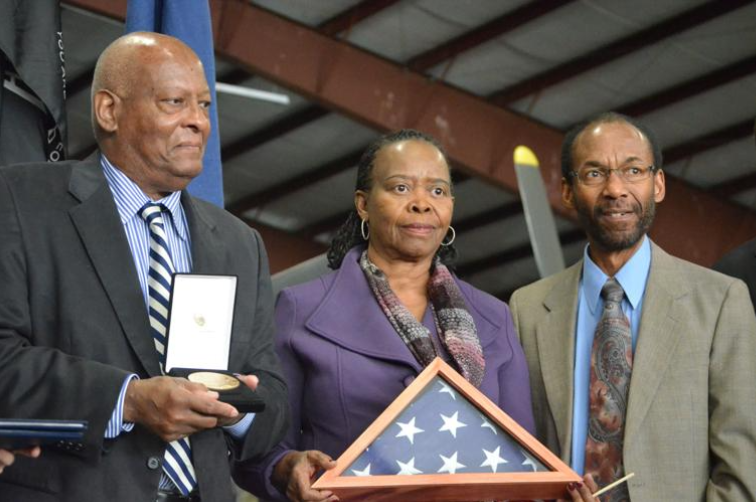
Once I had the family of Leland Pennington in the loop, my focus expanded to that of his friends. As people began to talk about my project, I soon learned that the Red Tail who participated in our annual program, Charlie Price, was actually best friends with Leland. Their comradery dated all the way back to early childhood. I contacted Charlie about setting up an interview, and he was elated at the chance to talk about he and his pal’s capers. Charlie had an astigmatism, which prevented him from flying in the War. However, as a member of the Tuskegee Airmen, he served in the role of flight planner. Charlie was responsible for ensuring that each P-51 under his jurisdiction was properly loaded with fuel and ammunition, and also could make it to the target and back home to Ramitelli Airfield. No easy task, but he handled it with pride and ease.
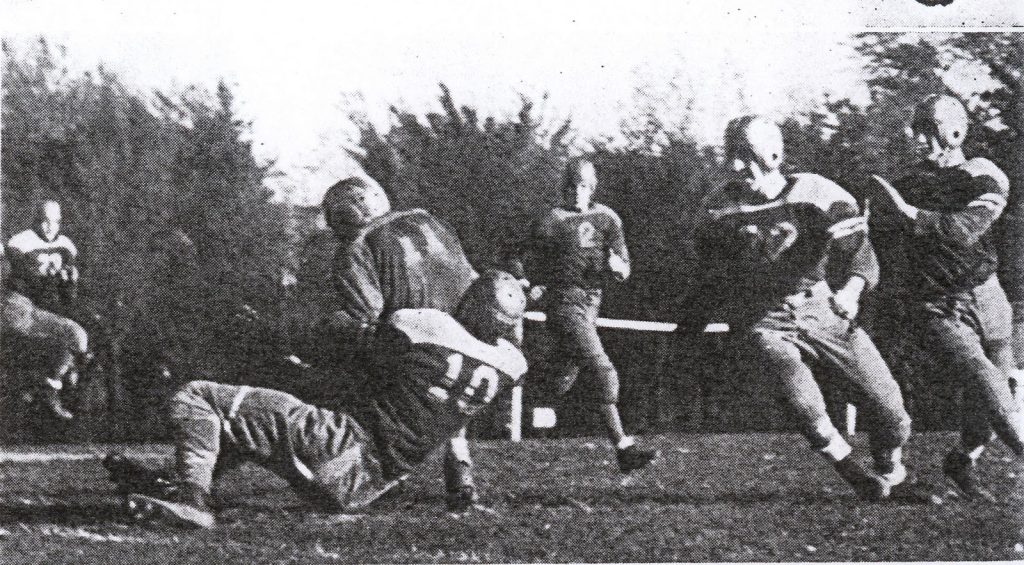
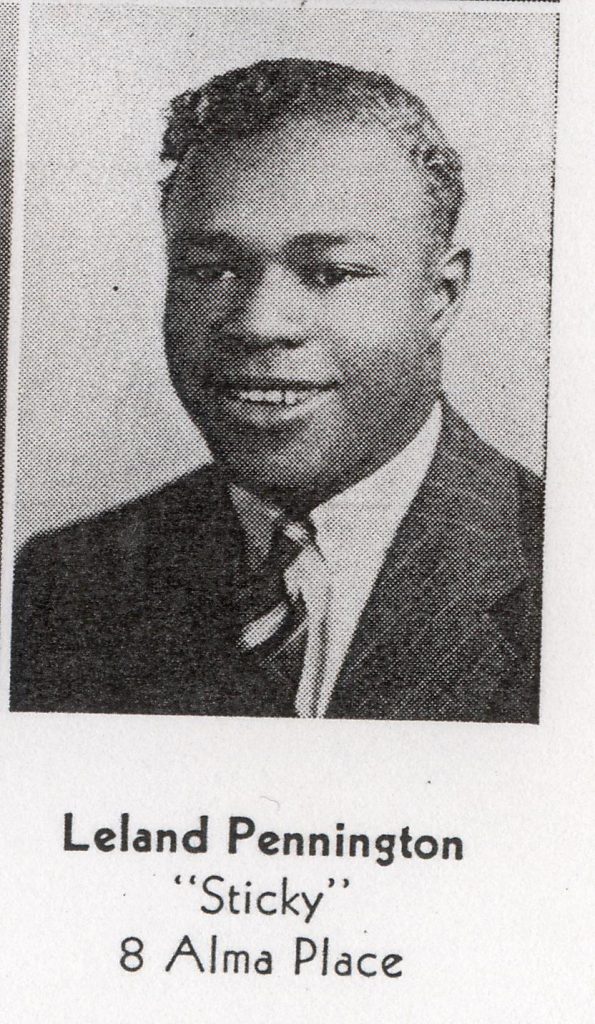
As I interviewed Charlie, he told me about he and Leland’s days as childhood friends, and also as rivals. Leland went to Monroe HS, and Charlie went to Madison HS. They were best of friends most of the time, except when they were squared off in a football game. Charlie told me that in addition to being quite the athlete, Leland was a skilled musician as well. He played the drums, and this is how he earned his nickname “Sticky.” Charlie and Leland did what all typical boys did back in the early 1940s, had fun, and were the gad about town. Both eventually shipped off to war, and would occasionally see each other on base at Ramitelli. Charlie remembered the day Leland went missing quite vividly, and was in shock for the longest time at the loss of his friend. For the rest of his life, he wondered what exactly happened to Leland, “where could he have wound up?” I would maintain this friendship with Mr. Price (who was also the first African American Police Officer in the City of Rochester, NY) until his passing in 2021. At the same time that I connected with Leland’s family and his friend, I began to seek more specific information about Leland’s service as a Red Tail P-51 Pilot. I submitted research requests to the National Archives, Smithsonian, and USAF Records at Maxwell AFB, seeking any and all info on Mr. Pennington. From here, the project really began to take off.
(continued in part 2)







